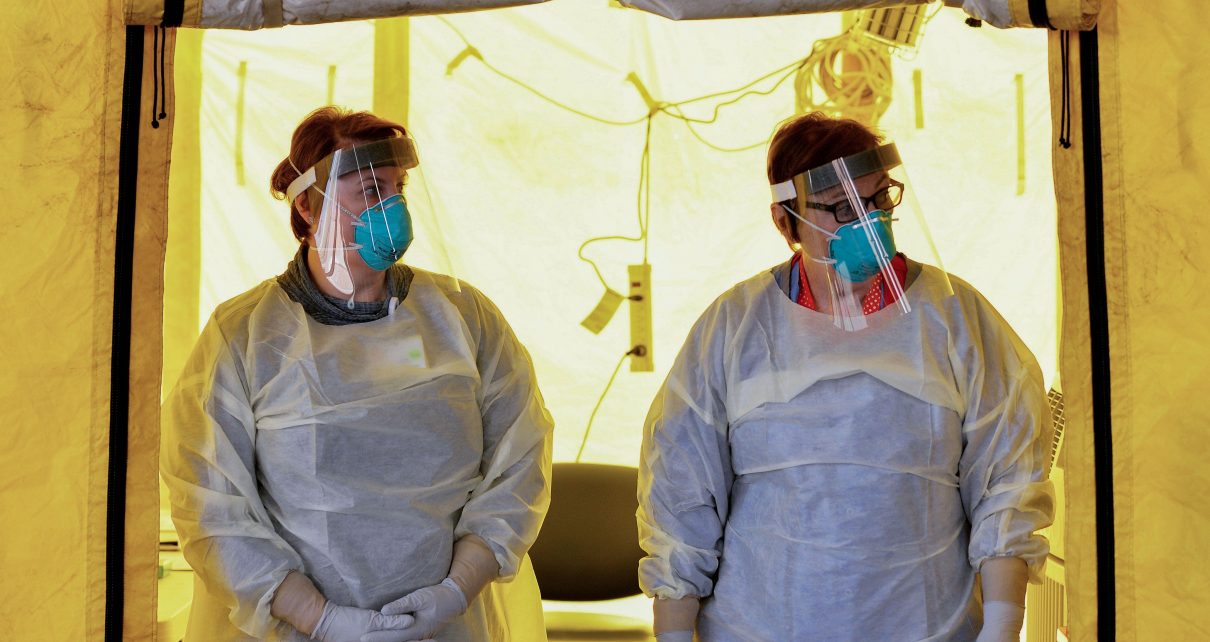Living through the COVID-19 pandemic, we are all now seeing the consequences of a failure to plan ahead when an event is predictable but the timing is uncertain. The inattention paid by America’s political leadership to the recommendations, or even the existence, of the Pandemic Influenza Plan prepared in 2017 is having tragic consequences as the death toll mounts. Other nations were similarly unprepared by what has happened to them. Virologists have long known that a new influenza virus with properties akin to the 1918 H1N1 pandemic strain could wreak havoc globally—and of course here in the U.S.A.
Now, a member of a different family of respiratory viruses, the SARS-CoV-2 coronavirus, is killing people worldwide in a rapidly spreading pandemic. This kind of event was foreseeable. Viral pandemics have always been a feature of human history, influencing our societies for millennia but all too often forgotten as they strike at long and irregular intervals. So, at some point, perhaps not in the lifetimes of many of us, another lethal virus will emerge and sweep the globe. It needs planning for, much more seriously than has happened in the past. And that process should involve the world’s virologists.
It is impossible to know exactly what virus might become a pandemic strain decades from now, but it is surely possible to make some educated guesses as to where the greatest risks might lie. What virus families have the potential to become pandemic strains? Obviously, influenza and coronaviruses are on the world’s radar screens, but there are other candidates including the Hendra/Nipah family, Chikungunya virus, the filoviruses and new retroviruses. Something unknown to the public and politicians today could become tomorrow’s headline health crisis. There are now nearly 7,000 named virus families and vastly more that have yet to be identified let alone understood.
Most of the known families are seriously understudied. Even coronaviruses, in the news since the 2002 SARS outbreak, were not being worked on in many virology laboratories. Now, virologists nationwide are repurposing their laboratories to make contributions to coronavirus research or to support local clinicians. That includes my own, which has some expertise in the HIV vaccine area. Such switches of priorities may well often be transient, but lessons are being learned during the process. Starting work on a different, but known, virus requires access to key reagents including expression plasmids, antibodies and other tools of the trade.
The core methodologies are likely to be already in place in virology and vaccine development laboratories, but cannot be used rapidly without the specific reagents for the virus-du-jour. While colleagues who have them are invariably flexible and generous, they are also swamped with requests. Advance planning could play a significant role here, not just in academia but also in the biotechnology and pharmaceutical industries that translate knowledge into drugs and vaccines. The most promising viral targets for these biomedical interventions are often understood, and there are ever-evolving techniques for rapidly applying that knowledge. But, again, in a fast-moving medical crisis, the human skills and the scientific techniques may be hampered by the lack of specific reagents at the right time.
For the future, we should consider supporting new and existing central repositories of virology reagents and specific techniques that are representative of the most plausibly pandemic pathogen families. Yes, in many cases the specificity requirements for the exact circulating strain may compromise, but perhaps not destroy, the value of some deposited reagents, but with careful planning the benefits may still be there.
An analogy might be to the American Type Culture Collection (ATCC) repository of standard cell lines, a resource that has long been of substantial value to biomedical researchers. The NIH funds a repository of reagents for HIV research that is a valuable resource in my own research area. Consortia dedicated to countering the risks of emerging infections, including pandemic viruses, do exist—for example, the Global Virome project, GISAID and the Zoonoses Anticipation and Preparedness Initiative. But how well are they funded? Are their capacities and capabilities adequate in light of what we are now learning? Is better coordination and less balkanization possible?
Antiviral drug development by the biotechnology and pharmaceutical industries could also benefit from planning ahead, supported by the virology community. We are currently seeing drugs that were developed to combat Zika virus or HIV being evaluated clinically for efficacy against SARS-CoV-2; they may have sufficient cross-family reactivity to be useful at acceptable doses. But how much more useful would it have been had a “generic” coronavirus drug been developed after the SARS (and MERS) outbreaks?
The targets were known, the techniques were there, but the discovery and translation were not carried out. There is a risk that a novel coronavirus might be resistant to a drug developed using SARS-CoV-1 (the original SARS virus) as a template, but also the chance of significant benefit that could buy time and save lives. Similarly, we need more and better influenza virus drugs against conserved targets. And we have essentially nothing in our lockers for any other viral families, even ones that are known pandemic risks. The costs of developing a new drug (hundreds of millions of dollars) that may never be used are substantial, but at the very least we could consider identifying lead compounds and conducting pilot studies as an insurance policy for the future.
I have referred above to various already known virus families. But there is also the unknown to consider. What new zoonotic transmissions might occur in the years to decades to come, creating a human pathogen of which we may have little advance knowledge? Existing investments in this area should be expanded, including by increasing the number of basic virology research laboratories and their funding levels.
I am not proposing a specific plan here; I am suggesting that in the aftermath of the COVID-19 pandemic it will be time to think seriously about the future. Working together with funding agencies, the world’s virology community should be mobilized to address, in advance, the next viral pandemic. Whether that human tragedy occurs in our lifetimes or our grandchildren’s, happen it most certainly will. Although SARS-CoV-2 is a lethal virus, it kills only around 1 percent of those it infects. Its cousins, the original SARS virus and the related MERS virus, are over 10 times more dangerous. Other known viruses are capable of killing far, far higher proportions of the humans they infect, avian influenza being a well-known and particularly lethal concern. It is not trivializing what we are presently going through to say that, next time, we might not be so lucky.…




